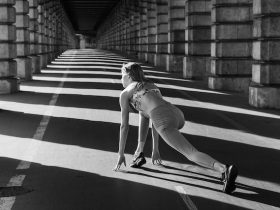Running is not only a fantastic form of exercise; it’s a versatile sport that welcomes all levels of ability. Whether you are a beginner or an experienced runner, understanding different running styles can significantly enhance your performance and enjoyment. This guide explores various techniques to help you find your perfect stride.
Understanding Your Stride
Every runner has a unique stride, influenced by factors like body type, fitness level, and personal preferences. However, strides generally fall into a few main categories:
Forefoot Strike
Forefoot striking involves landing on the balls of the feet. This technique is often used by sprinters as it allows for rapid acceleration and generates a powerful push-off force. While it can lead to increased speed, it might also strain the calves or Achilles tendons if not done properly. Proper training and conditioning are necessary to master this style effectively.
Midfoot Strike
A midfoot strike represents a balanced approach, where the foot lands flat, and the pressure is evenly distributed. This can lead to a smoother, more stable run. Runners utilizing this technique often find a good balance between speed and endurance. It’s especially popular among distance runners and can reduce the risk of common running injuries.
Heel Strike
Heel striking is a common technique among casual and long-distance runners. Landing on the heel can provide more stability, especially over longer distances. However, it can cause additional stress on the knees and other joints if not done with care. Proper footwear and attention to overall body alignment can help mitigate potential issues.
Overstriding
Overstriding happens when the foot lands far ahead of the body’s center of gravity. This can create a braking effect, reducing running efficiency. It’s often a sign of fatigue or a lack of core strength. Correcting overstriding requires mindfulness of body positioning and may involve strengthening exercises to support proper alignment.
Techniques for Different Goals
Different running styles are suited for various goals and preferences. Here’s a look at how different techniques can align with specific objectives:
Sprinting
Sprinting requires a technique that emphasizes power and speed. Utilizing a forefoot strike and keeping the feet under the body facilitates quick, explosive movements. Proper form, strength training, and flexibility are vital in maximizing sprinting performance. This style demands high energy but can lead to impressive speed when executed correctly.
Distance Running
Distance running focuses on endurance and consistency. Here, a midfoot or heel strike can be more suitable as it allows for energy conservation. Pacing, rhythmic breathing, and mental focus are also key components. Training plans that build stamina and integrate various running styles can enhance long-distance running capabilities.
Trail Running
Trail running presents unique challenges due to uneven and often unpredictable terrain. Adapting to the surface requires agility, balance, and a flexible approach to foot striking. Incorporating strength training, especially for the legs and core, and practicing on actual trails can help prepare runners for this adventurous style.
Injury Recovery
When recovering from an injury, a tailored approach to running may be necessary. Understanding and possibly modifying running styles can aid in a safe return to the sport. Working with healthcare professionals who specialize in sports injuries ensures a recovery plan that respects individual needs and focuses on proper healing and rehabilitation.

Finding Your Perfect Style
Discovering your ideal running style is a journey, but these strategies can guide you:
Self-Assessment
Understanding your natural running style can start with self-observation. Whether it’s feeling your foot’s landing pattern or analyzing a video, self-assessment can be a powerful tool. Reflecting on comfort and efficiency can lead to personal insights and guide further exploration.
Professional Guidance
Coaches and therapists offer expert insights and can conduct detailed biomechanical assessments. Their guidance can help identify strengths, weaknesses, and areas for improvement. Investing in professional guidance often accelerates progress and leads to a more personalized running experience.
Experimentation
Experimenting with different styles can be both fun and educational. Trying various techniques in controlled environments like a track or treadmill can provide valuable feedback. This process of trial and error can eventually lead to discovering what feels best for your body.
Focus on Form
Running is more than just foot placement. Proper alignment, relaxed shoulders, engaged core muscles, and smooth arm movements all contribute to efficient running. Focusing on the whole body and practicing drills or exercises to enhance form can make a significant difference in running enjoyment and performance.
Conclusion
Finding your perfect running style is about understanding the options, experimenting, and listening to your body. There’s no one-size-fits-all approach; your ideal stride will depend on your unique body, goals, and preferences. Remember, it’s not just about the feet. The whole body works together when you run, so consider overall form, alignment, and movement efficiency. Whether you’re sprinting to the finish line, enjoying a leisurely jog, or tackling rugged trails, embracing your unique running style will lead to a more fulfilling and effective experience. Happy running!





